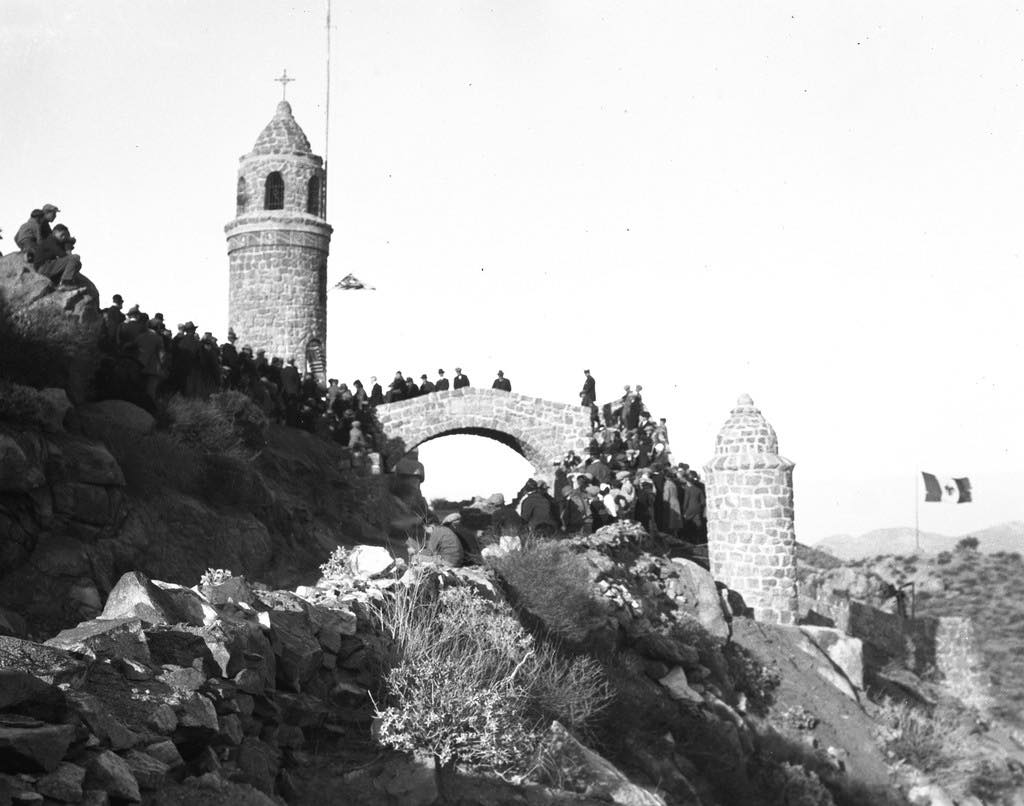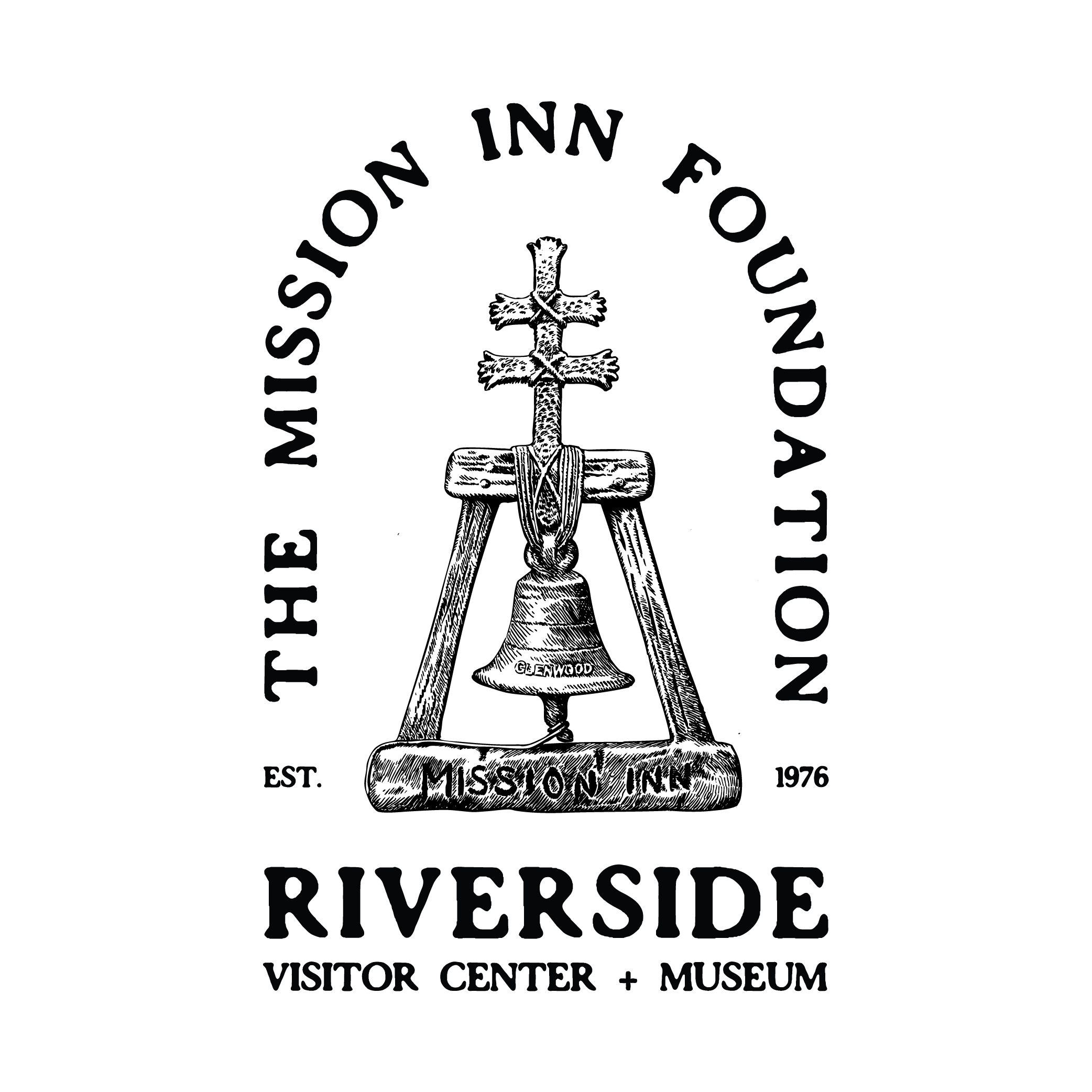
- The famous movie “Gone with the Wind” was first shown publicly at Riverside’s Fox Theater on September 9, 1939.
- Riverside’s Fairmount Park is loosely based upon the more famous Fairmount Park in Philadelphia, Pennsylvania.
- In the 1880s, there were plans for a large hotel to be built on Mt. Rubidoux. The “Hotel Rubidoux” was started, but most of it blew down in Santa Ana winds.
- Arlington is a “town within a town.” Due to Riverside’s large initial size, the town of Arlington was established between Riverside and Corona. For many years, you could address a letter to Arlington!
- Riverside’s De Anza statue was dedicated on Saturday, May 18, 1940. It looks out over Anza’s route through what would become Riverside. The likeness of Ed Loustaunau, a Riverside resident who was a direct descendant of Anza’s brother, was the basis for the statue.
- Riverside’s Poly High School began in 1911 as a boys-only high school, located on the present-day site of Riverside City College. It moved to its present location in fall, 1965.
- Although citrus is thought of as something that occurred early in Riverside’s history, it was the year 1939 when Riverside’s orange acreage peaked. After WWII, much of the acreage that had been dedicated to citrus cultivation was slowly converted to suburban land uses.
- Riverside’s Mission Inn Hotel began as a small, cottage hotel called the “Glenwood Hotel.” It was in business for nearly 30 years before the Mission Inn was constructed.
- There were two Parent Navel Orange Trees. In 1902-1903, they were transplanted – 1 to the corner of Arlington and Magnolia Avenues, and the other to the courtyard of the Mission Inn. President Theodore Roosevelt helped to transplant the latter tree.
- Magnolia Avenue originally began at Arlington Avenue and continued south. It wasn’t until 1913 that the connection was made between Arlington Avenue and Main Street downtown.
- The term “Magnolia Center” was coined by realtor Russell C. Burlingame as a real estate selling mechanism. He called it that because, in looking at a map of the city in the late 1920s, he noticed that the area around the intersection of Magnolia and Central Avenues was (roughly) the geographic center of the city.
- Heavy British investment into Riverside’s Arlington Heights area led to the naming of the main boulevard through there for Queen Victoria, the reigning monarch at the time. Victoria Avenue parallels Riverside’s other major boulevard, Magnolia Avenue.
- The name of Riverside’s La Sierra neighborhood pays tribute to the two Mexican-era ranchos of the same name. The Rancho La Sierra (Sepulveda) and the Rancho La Sierra (Yorba) ranchos date to June 15, 1846 and encompassed much of southwestern Riverside and Corona.
- Riverside’s Alessandro Boulevard pays tribute to the hero of the 1884 novel Ramona, written to be a romanticized tale of the plight of California’s native population at the time of California’s statehood. Alessandro Boulevard started in Moreno Valley
- Riverside’s University Avenue started off as 8th Street, and was the main highway heading east from downtown. 8th Street was lined with orange groves for years, but as auto traffic increased into the city, small motels began to line the stretch between Box Springs and downtown.
- Box Springs was not named for a mattress! A “box spring” is generally any spring that has been improved by boxing it in with wood to make access to the water much easier. Riverside’s Box Spring aided travelers for many years, even well before Riverside’s founding.
- Riverside’s downtown “Mile Square” was laid out by John Goldsworthy, who would later become the chief engineer for the City of Los Angeles.
- The Citrus State Historic Park in Riverside celebrates the rich history of the citrus industry in Southern California. The Washington Navel Orange catapulted Riverside from a small agricultural community to the city with the highest per-capita income in the country in 1895.
- Riverside’s Hunter Hobby Park boasts one of the oldest and largest live-steam model railroad layouts in the region.
- The former Lily-Tulip Manufacturing Company boasted the “World’s Largest Paper Cup” in front of its Riverside factory for many years. Although the plant is no longer used for the manufacturing of paper cups, the large cup can still be seen at 800 Iowa Avenue.
- The term “Arlanza” is a combination of “Arlington” and “Anza.” During World War II, the Arlanza area was known as Camp Anza and was a busy debarkation point for soldiers going to the Pacific Theater.
- The main campus of California Baptist University in Riverside was once a retirement facility for the Neighbors of the Woodcraft, a fraternal benefit society. People would pay into the facility while they worked, then when they needed to be cared for in old age, they could come live there.
- The University of California at Riverside (UCR) opened in 1954 after much lobbying from local residents and Dr. Gordon Watkins. The University of California, though, had had a presence in Riverside since 1907 with the Citrus Experiment Station.
- The “Water Buffalo” military vehicle in Fairmount Park was one of thousands built in Riverside during World War II. Food Machinery Corp, which made machines such as citrus graders, quickly changed over to war production and employed over 2,000 Riversiders in the making of these armored landing vehicles.
- What we know as March Air Reserve Base began life in early 1918 as the Alessandro Aviation Field, since it was located in what was then considered the Alessandro Valley. On March 1, 1918, an air cadet named Henry Compere became the first military personnel to land at the new base, which just two weeks later was rechristened as March Field.
- Fairmount Park’s rose garden began in February, 1956 when the City of Riverside was awarded 200 rose bushes by Howard’s Roses of Hemet. The City won the rose bushes in a rose show the previous year at the Mission Inn. The City’s entry, deemed best floral arrangement, was put together by Rose Gish, Juanita Garat, and Mildred Grooms.
- The Fairmount Park locomotive was built in October, 1907 by the Baldwin Locomotive Works of Eddystone, Pennsylvania. It served on the San Pedro, Los Angeles, and Salt Lake Railroad, and later the Union Pacific. It was saved from the scrapheap in 1954 when it reached its new home in Fairmount Park in July of that year.
- Fairmount Park’s Lake Evans was named for early Riverside pioneer Samuel Cary Evans. Evans developed the Riverside Land and Irrigating Company in 1874, consolidating three competing colony ventures. The family donated much of the land for Fairmount Park.
- The California School for the Deaf in Riverside is one of only two such schools in the state. Riverside’s campus covers all of Southern California (the other campus is in Fremont for Northern California).
- Among many items, Riverside’s new Civil Rights Institute of Inland Southern California will provide public programming and children’s programs focusing on civil rights and the region’s civil rights history.
- The Inlandia Institute in Riverside, begun in 2007, in concerned with literary activity in all of its forms throughout the Inland Empire. It publishes books and holds seminars on a wide variety of literary means.

